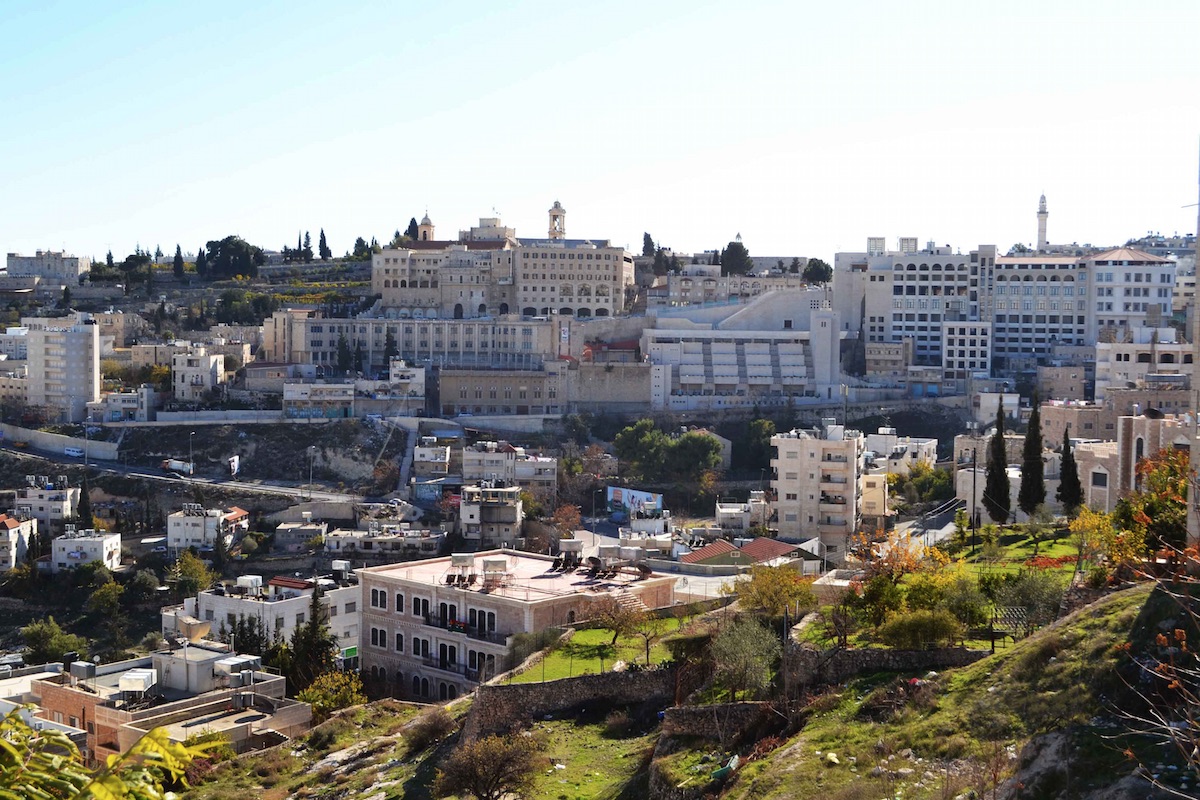Ancient Burial Ground with 100 Tombs Found Near Biblical Bethlehem

An ancient necropolis that once held more than 100 tombs from as far back as 4,000 years ago has been discovered near the Palestinian town of Bethlehem in the West Bank.
The burial ground was discovered in spring 2013 during the construction of an industrial park. In 2014 a team from the Ministry of Tourism and Antiquities of Palestine excavated some of the tombs, and in 2015 a joint Italian-Palestinian team surveyed the necropolis and created a plan for future exploration. The archaeologists found that the necropolis covered 3 hectares (more than 7 acres) and originally contained more than 100 tombs in use between roughly 2200 B.C. and 650 B.C.
Located on the side of a hill, the archaeological site — now called Khalet al-Jam'a — was likely a burial ground for a nearby settlement whose location is unknown. [See Photos of the Necropolis at Khalet al-Jam'a]
The site's "long-lasting utilization, over a millennium and a half or more, and the large number of tombs, suggest that Khalet al-Jam'a was the necropolis of a major settlement in the area, possibly a town," Lorenzo Nigro, professor at Sapienza University of Rome, wrote in an article published recently in the journal Vicino Oriente.
Nigro said that finds from the necropolis indicate that the settlement was a wealthy place, with access to trade routes. Ancient texts refer to a "Beth-Lehem" that flourished in the area.
"Typical pieces of the burial sets are finely executed carinated bowls, small shouldered jars/bowls with everted rim[s], one-spouted lamps, huge and well-refined Canaanite jars with two or four handles, as well as bronze daggers and spearheads," Nigro wrote.
Ancient finds
Get the world’s most fascinating discoveries delivered straight to your inbox.
Though the necropolis has been partly destroyed by looting and construction, the archaeologists were able to identify at least 30 tombs. "The necropolis of Khalet al-Jam'a is mainly characterized by shaft tombs with single or multiple rock-cut chambers," the team wrote in another paper published in Vicino Oriente, noting that the builders enlarged and renovated natural cavities on the hillside.
In one tomb, the remains of a man, woman and child were found buried with two bronze daggers and a variety of ceramics, including twin vases attached together. Archaeologists found that the tomb dated to the Middle Bronze Age, more than 3,500 years ago.
Another tomb at Khalet al-Jam'a contained a nearly complete male skeleton buried with a ceramic lamp that had four sides folded into spouts. Archaeologists said this particular tomb may date to an earlier point in the Bronze Age more than 4,000 years ago.
Another intriguing tomb contained two Egyptian-like amulets, known as scarabs, which were mounted on rings made of bronze or gold. It’s possible that, rather than being imported from Egypt, the scarabs were made locally.
The scarabs date to the 13th dynasty of Egypt (1802 B.C. to 1640 B.C.), Nigro said. One of the scarabs contains a series of circular decorations, while the other has swirling designs and what appears to be hieroglyphic writing. Two of the hieroglyphic symbols are written within an oval circle known as a cartouche. The Egyptians often wrote royal names in cartouches, and archaeologists are studying the scarabs for these types of details.
Egyptian scarabs have been found at many other sites in the eastern Mediterranean. Ancient records say the Egyptians were very active in the region, trading for goods and, at times, conquering territory.
Ancient crisis?
The necropolis stopped being used around 650 B.C., Nigro wrote, adding that the name Bethlehem stopped appearing in ancient documents for several centuries until reappearing around the time of Christ.
"It seems that the town suffered a crisis," Nigro wrote. What exactly happened in Bethlehem around 650 B.C. is unclear. However, Nigro noted that around this time, the Assyrian and Babylonian empires launched a series of military campaigns in which they captured land in the region. Stories of these campaigns were told in biblical literature.
Follow Live Science @livescience, Facebook & Google+. Original article on Live Science.

Owen Jarus is a regular contributor to Live Science who writes about archaeology and humans' past. He has also written for The Independent (UK), The Canadian Press (CP) and The Associated Press (AP), among others. Owen has a bachelor of arts degree from the University of Toronto and a journalism degree from Ryerson University.

